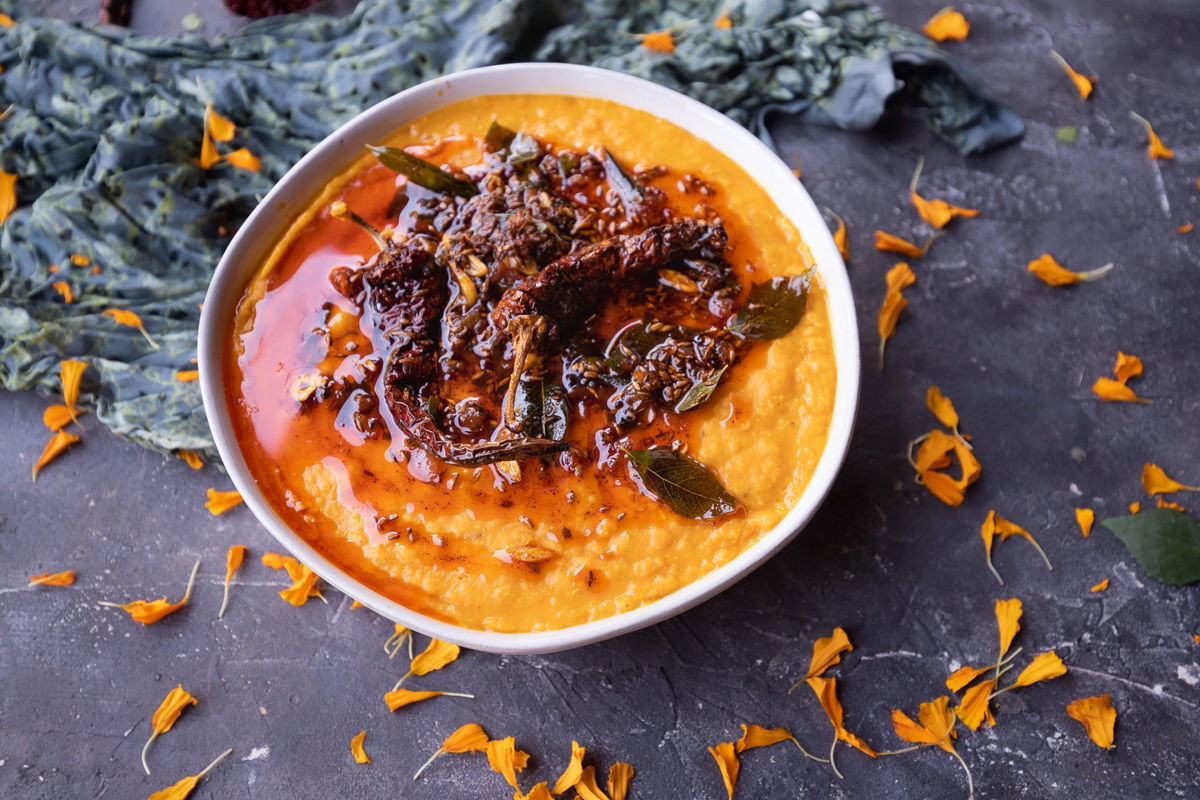Choorma Ladoo is not a sweet you’ll find in a mithai shop. It’s not even one you’ll see often at home anymore.
Choorma ladoos are the kind of sweets grandmas used to make. They are enormous, golden, fragrant, each one a small prize of ghee and jaggery. You didn’t buy them. You earned them, by sitting nearby as your mom or nani fried, ground, and shaped them by hand.
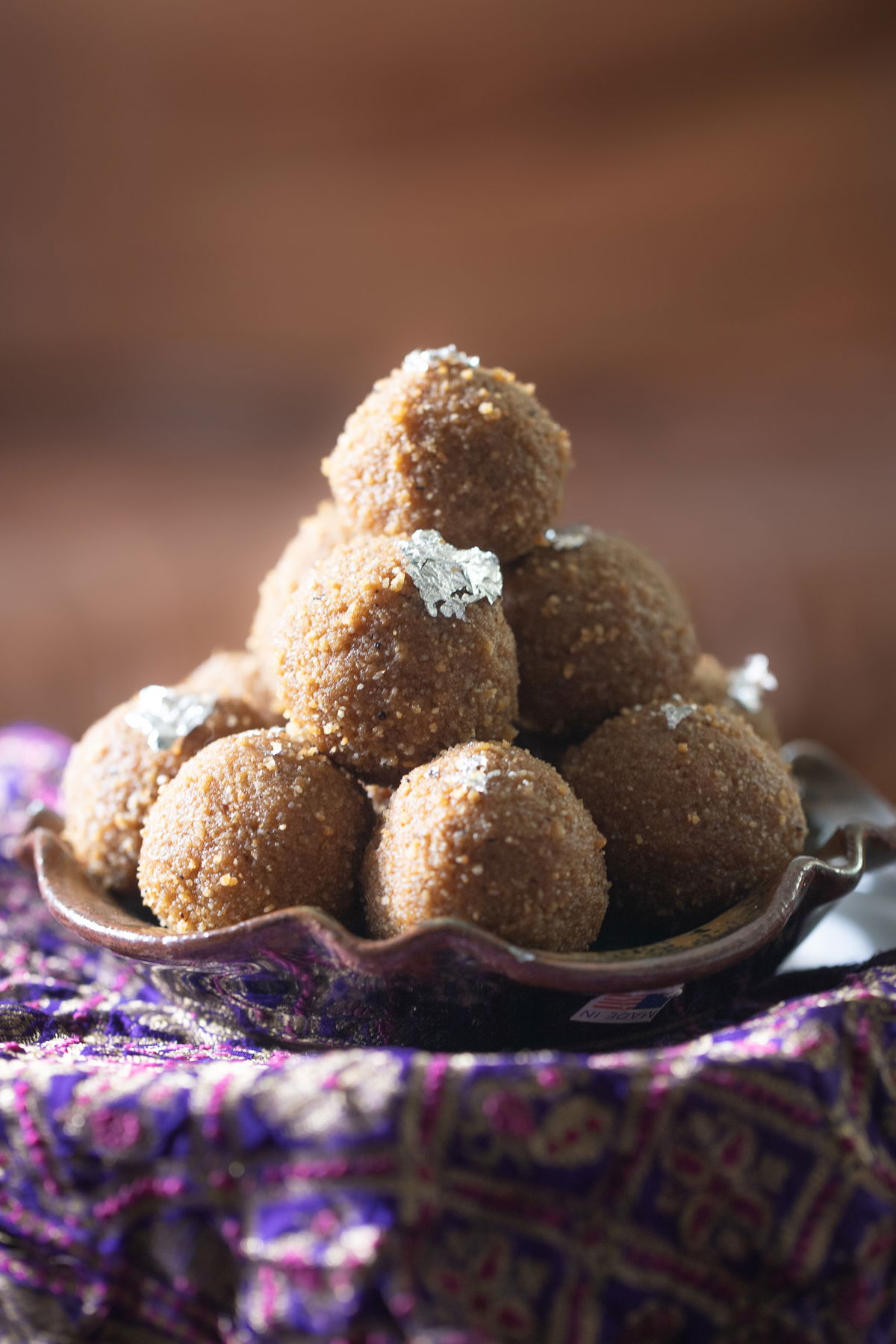
This year, I made them with my mom for Ganesh Chaturthi, and as always, the kitchen smelled like childhood.
What Is Choorma Ladoo?
Choorma Ladoo is a traditional Gujarati and Rajasthani sweet made from fried wheat dough (bakhri no lot), jaggery (gor), and ghee. The dough is shaped into small logs (muthiya), fried until deep golden, then ground into a coarse sandy texture to make the choorma. The choorma is flavored with cardamom and nutmeg, bound with melted jaggery and ghee, shaped into firm round ladoos and slammed on to the thali to get their signature flattened look.
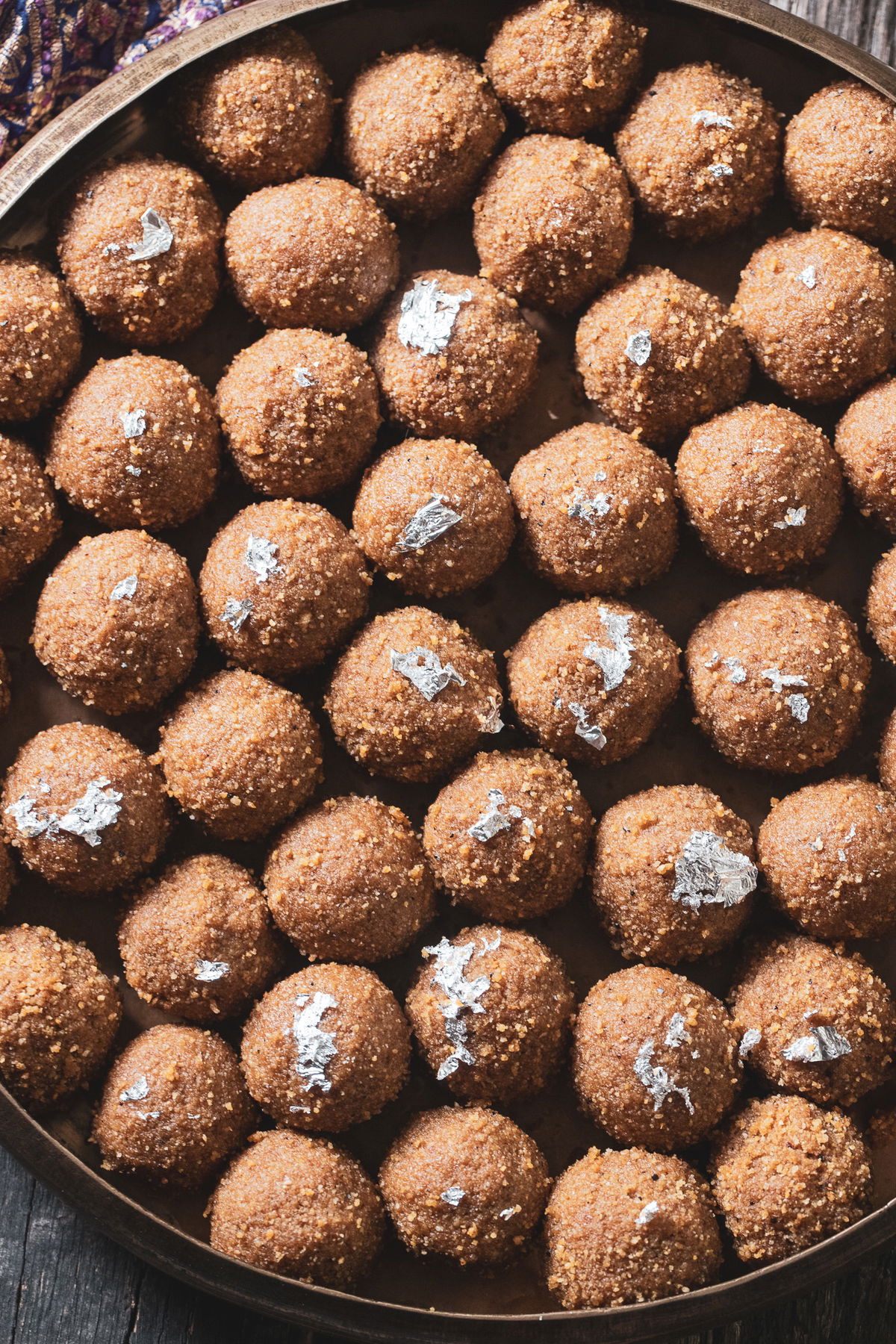
It’s a simple sweet. It’s just flour, nuts, ghee, and jaggery, but it demands time and patience.
A Recipe That Takes a Village
Making choorma ladoo is a family event. When we filmed this for Indiaphile, my mom took charge of the dough and the frying, I handled the grinding. My dad and son even joined in to help shape the ladoos at the end.
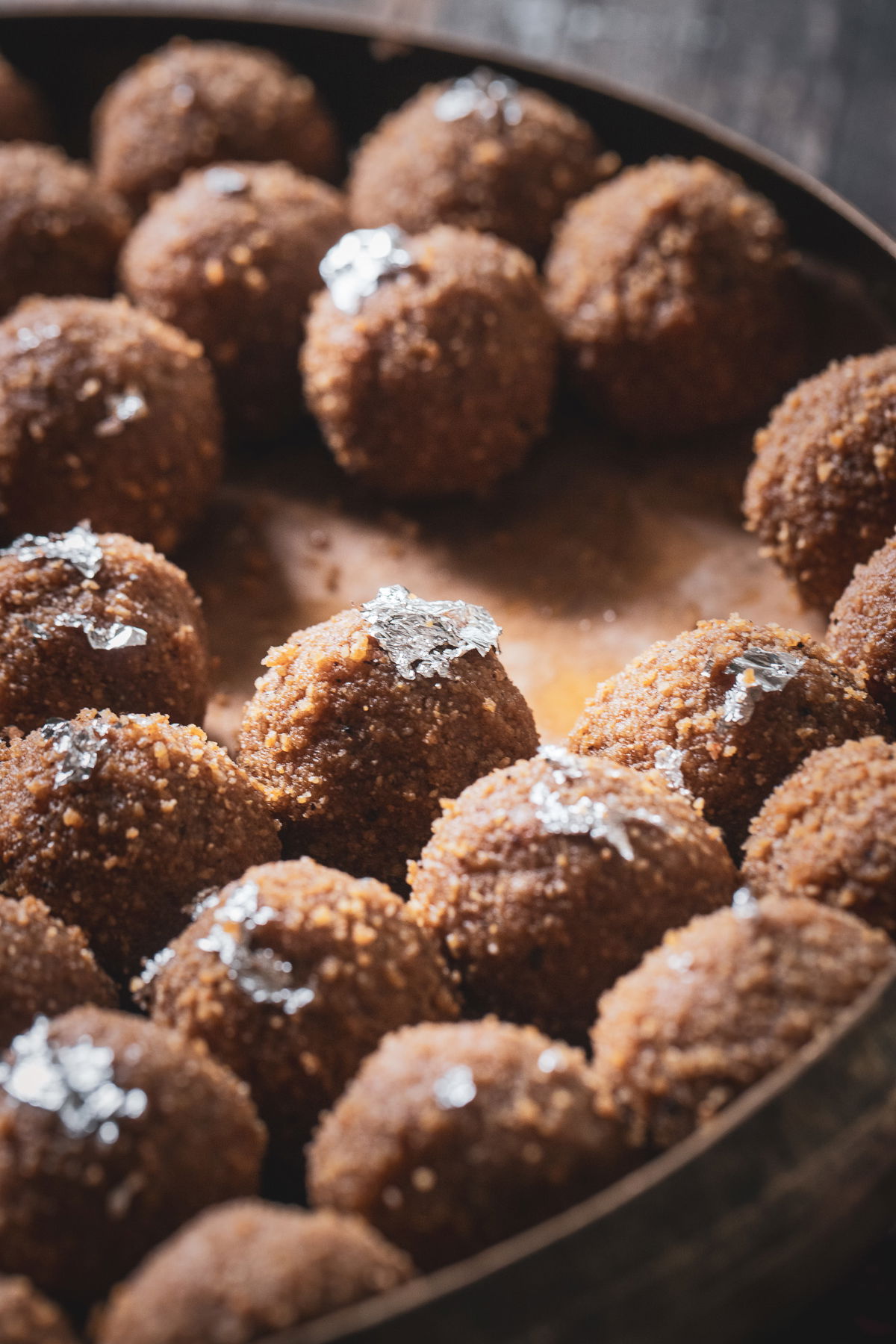
This is not fast food. It’s slow, rhythmic, and meditative. It is the kind of recipe that connects generations through shared motion. You make one batch at a time, testing the dough for firmness, frying patiently on medium heat, and grinding by hand or food processor.
It’s hard to imagine, but traditionally this was all done with a mortar and pestle. To make things easier, I use a food processor. My mom usually uses a blender. But even with a machine, the grinding and sifting are no joke. We discovered that a spice (coffee) grinder actually worked better than a food processor for the final fine grind.
The Ingredients
- Bakhri no lot – coarsely ground whole wheat flour
- Almonds or almond flour – coarser than store-bought; grind your own for better texture
- Jaggery (gor) – melted gently in ghee to form the base binding
- Cardamom and nutmeg – the warm spice heart of the recipe
- White poppy seeds (optional) – add a delicate nutty note
- Rava (optional) – for extra texture if your flour is too fine
- Ground ginger (optional) – adds a warmth to the ladoo
How to Make Choorma Ladoo
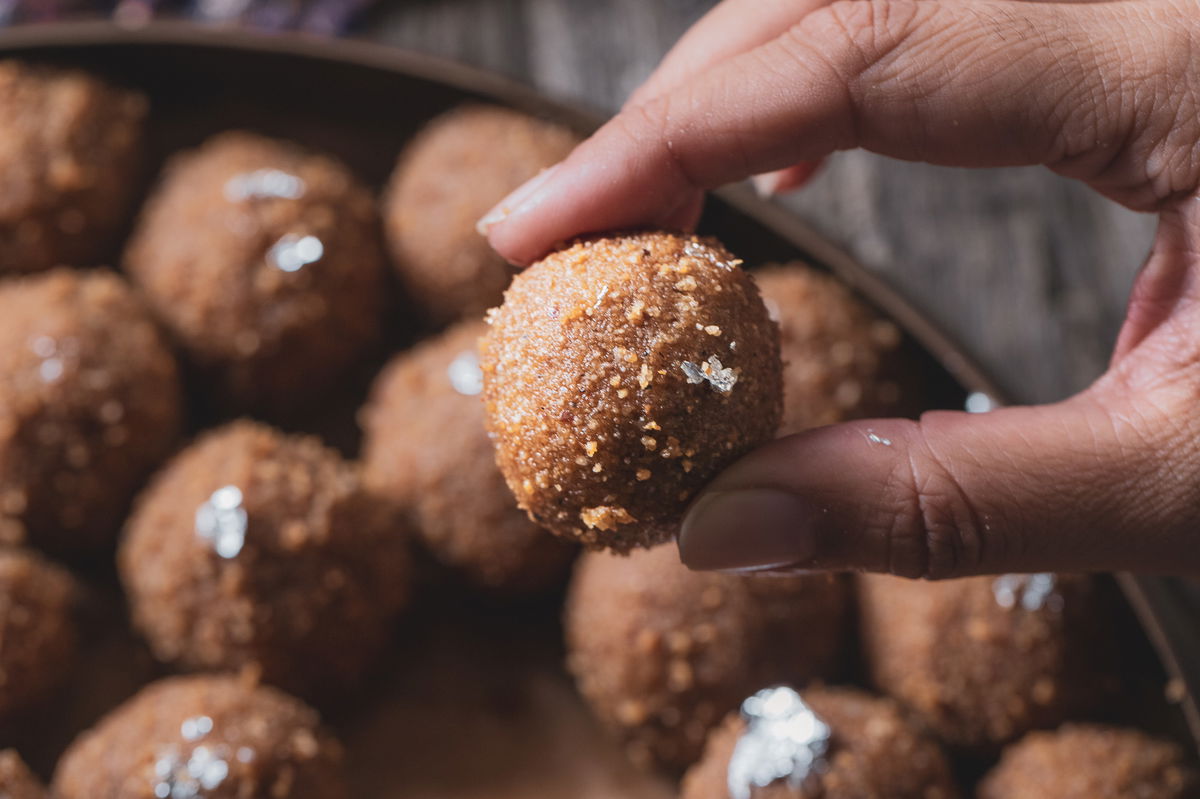
- Mix the dry ingredients: bakhri no lot, almond flour, and rava (if using).
- Form firm dough balls (muthiya): add just enough water to shape small, tight oblongs with a center divot.
- Fry slowly: use oil with a few tablespoons of ghee for flavor. Cook on medium-low until deep golden and crisp all the way through (fry for 12–15 minutes per batch – do not rush!).
- Grind the choorma: once cooled, break into pieces and grind. Sift through a wide-mesh colander and regrind the larger pieces until all the muthiya are broken down into an evenly sandy texture.
- Flavor and bind: mix in cardamom and nutmeg, then pour in melted jaggery and ghee. Adjust ghee until you can shape a firm ball that doesn’t crack when dropped lightly.
- Shape: form into flat-ended ladoos. Traditionally, these were massive — my childhood versions were “the size of your fist.” We make them smaller now; one or two bites is just right.
Occasions
Choorma Ladoo is a festive sweet served during:
- Ganesh Chaturthi – offered as naivedyam
- Weddings and auspicious days
- Diwali celebrations
Tips and Troubleshooting
- Fry low and slow. If you rush the frying, the center will taste raw.
- Don’t overgrind. You want a coarse, sandy texture — not a paste.
- Adjust ghee gradually. Too much, and the ladoos will be oily; too little, and they’ll crumble.
- Test your mix. Press and drop one ball — if it holds together, it’s perfect.
Storage and Serving
Store in an airtight container at room temperature for up to 2 weeks. They also freeze beautifully. Just thaw and warm slightly before serving.
Serve as part of a mithai spread with:
- Besan Ladoo
- Mohanthal
- Ghevar
And pair with masala chai or cardamom milk for the full nostalgic experience.
The One Thing to Know
The recipe is simple. The ingredients are few. But the effort is the ingredient that makes it taste the way it should.
Choorma Ladoo
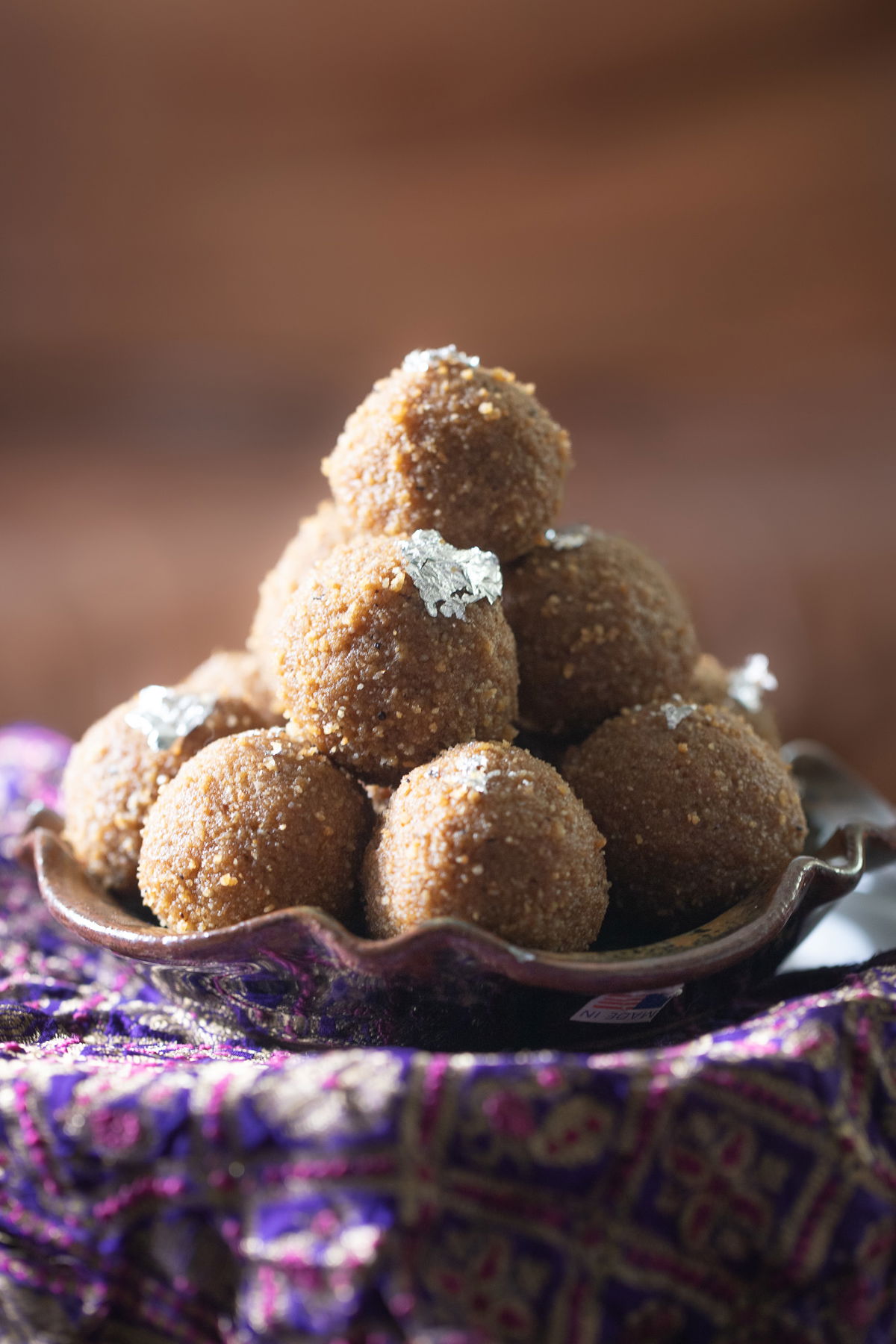
Ingredients
- 4 cups 450 g bhakri no lot (coarsely ground whole wheat flour)
- 2 cups 200 g almond flour
- 3 Tbsp 35 g semolina (optional, for texture)
- 1 1/2 cups ghee (plus up to 1/2 cup more if needed, and extra for frying)
- 1 1/2 cups 500 g jaggery, grated
- 1 whole nutmeg (freshly grated)
- 1 Tbsp ground cardamom
- 1 cup water
- Oil or ghee for frying (I like to use oil with 2–4 Tbsp of ghee mixed in)
Instructions
- Make the Dough. In a large bowl, combine the bhakri no lot with almond flour and semolina (if using). Working in small sections, add a splash of water at a time and knead to form a firm, hard dough.
Shape and Fry
- Shape portions of the dough into muthiya (logs), pressing a small divot in the center (see photo/video for reference).
- Heat oil (or a mix of oil and ghee) over medium-low heat, about 300°F if you’re measuring. Fry the muthiya in batches for 12–15 minutes, or until deep golden brown.
Cool and Grind
- Let the fried muthiya cool completely, then break them into small pieces.
- Using a food processor, blender, or clean coffee grinder, pulse (don’t blend continuously) until you get a coarse, sandy texture, not a paste.
- Sift through a large-mesh strainer, regrind any larger pieces, and repeat until the entire batch is uniformly coarse.
Add Spices and Sweeten
- Stir your spices into the sandy mixture.
- In a saucepan, melt 1.5 cups of the ghee and add the jaggery, cooking just until the jaggery melts, this helps distribute sweetness evenly.
Combine and Shape
- Pour the ghee-jaggery mixture into the sandy mixture and combine well. Test the texture by forming a ball and gently slamming it onto a plate: If it holds shape and slightly flattens, it’s ready. If it crumbles, add a bit more melted ghee and mix again.
Finish
- Roll the mixture into balls of your preferred size, then gently press each one to create that slightly flattened muthiya laddu shape.
